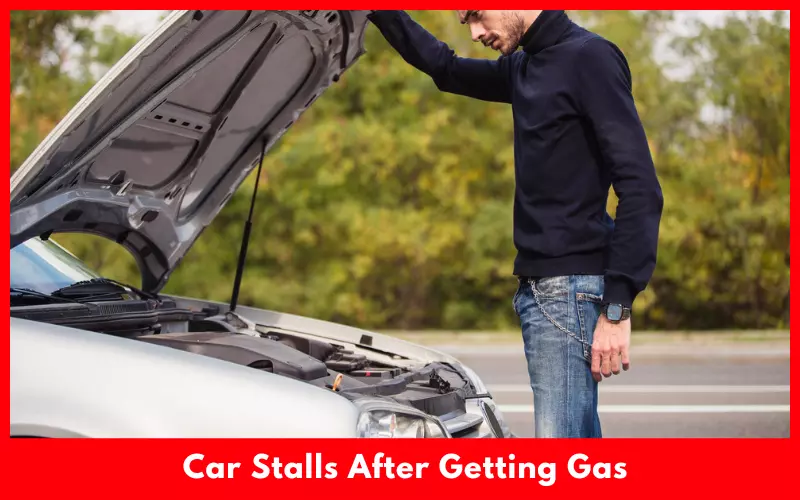Nothing is more frustrating than refilling a car’s tank and experiencing stalling while expecting a new start. If your car stalls after getting gas, it can be the result of silly mistakes like putting wrong or low-quality fuel or refilling an empty tank.
It can also be the result of damaged parts like the EVAP purge valve, evap canister, and purge control solenoid fuel pump. In this case, try building pressure, check the fuel quality, and tow the car to the auto repair shop. Regular maintenance is key to avoid this problem.
Article Summary
Why Does My Car Stall After Getting Gas?
Your car can stall after getting gas during starting while driving, or accelerating due to these reasons:
1. Stuck Opened Purge Valve
If your car stalls after getting gas even without refilling completely, it can be the result of the stuck open purge valve on the engine. The canister purge valve usually remains closed after shutting off the engine. But if the valve is stuck open, vapors can enter into the engine intake manifold during refilling.
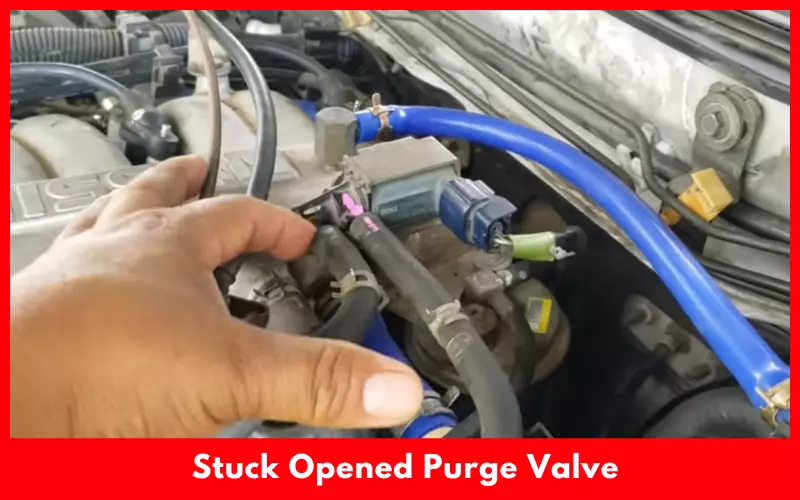
It can make an over-rich condition and lead the engine to crank excessively before firing. For the same reason, the car can run rough for a few seconds or even stall. The purge valve can be opened by the ECU’s signal and allow gas vapor to leave the carbon canister so the engine can burn it.
To verify, remove the valve from the air filter housing‘s top and try to blow through it in either direction. If you can, the valve is faulty and the source of the problem. You may need to replace the damaged purge valve.
2. Rust or Crud in Gas Tank
In older vehicles, there is rust or crud in the gas tank’s bottom. If you let the gas get very low in the tank and then fill it, the crud will stir up and clog the engine temporarily until it settles back down. Hence you can experience car stalls after getting gas.
To avoid this problem, fill up the gas tank before the fuel level drops under half. Doing so will create a buffer and prevent new gas from disturbing the crud that has settled in the tank’s bottom. If crud is the problem, you should notice the improvement.
After filling the tank, let the pump shut off automatically. Don’t add more fuel after shutting off. Overfilling can damage the evaporative emissions system.
3. EVAP Canister
The evaporator is an emissions control device that is placed under the vehicle and close to the gas tank. It prevents the raw fuel vapors from venting into the atmosphere. During filling the tank with gas, the vapors are vented to the evaporator canister which separates the fuel vapors from the air.

It vents air to the atmosphere and raw fuel vapor to the fuel intake so the engine can burn it. But if the excess fuel vapors flood out the engine, the car can stall. To fix the problem, you have to replace the evap canister.
4. Dirty Fuel or Crap
Filling the gas tank with dirty fuel or low-quality fuel can also stall the car and prevent it from getting started. Dirty fuel doesn’t have sufficient combustible ingredients. So the vehicle can’t run efficiently. Dirty fuel can clog the fuel line, carburetor, or injector. Fuel can also get contaminated and can cause a misfire, crank failure, and stalling.
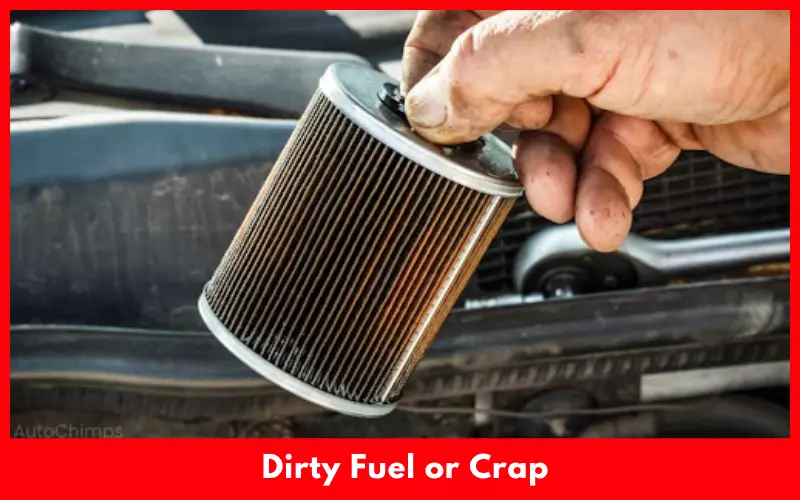
To fix this problem, replace the inline fuel filter or line cleaner. If it doesn’t work, tow the car to the auto repair shop.
5. Defective Purge Control Solenoid
A defective purge control solenoid can make it difficult to start the engine or cause a stall. The purge control solenoid is part of the evaporative emission control system and difficult to start the car is a sign of a defective part.
6. Fuel Pump
Most modern vehicles are fuel-injected and come with pumps inside the tank. If the car is out of gas, the pump starts running dry overheats, and gets locked up which is harmful to the pump. In this case, the car stalls and won’t start after adding gas to the tank as the carburetor bowl is empty.
The pump delivers fuel from the gas tank into the carburetor bowl and the carb meters supply gas into the engine. So, until the gas reaches the carb, the engine won’t crank and start.
What To Do if A Car Stalls After Getting Gas?
If your car stalls after getting gas, you can do two things. First, check the condition of the gas. If the gas is contaminated, notify the gas station and send the bill. If they don’t reimburse you, you can sue the gas station.
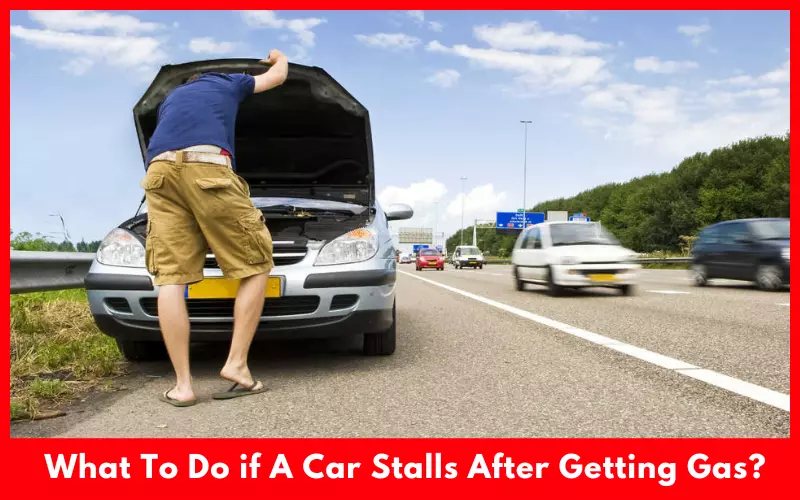
If there is no problem with gas, inspect your vehicle for faulty parts. It can be a faulty purge valve, damaged Evab canister, or fuel pump. For more accurate troubleshooting, tow the car to the expert mechanic and fix the faulty part.
How To Fix A Car That Stalls And Won’t Start After Getting Gas?
If your car’s engine crank struggles to run, and the stuck open EVAB purge solenoid is responsible for the need to replace it. But if the engine doesn’t crank and start, there are lots of possibilities. You can start by checking the fuel that the car requires and the fuel you refill.
Putting the wrong oil in the car disturbs the combustion process and makes the car stall. If you run the car till dry, find out how long it can burn the pump. If so, you have to replace the pump. Inspect the fuel systems including the fuel line, fuel filter, and pump to make sure these aren’t clogged or dirty and don’t make any sound.
Check the combustion chamber’s spark plugs as a faulty one can stall the car after getting gas. You should also make sure there is no dirt or debris in the mass air flow sensor as it can stall the engine. If so, you have to replace the broken sensor. ECU can also be the culprit that needs skills and equipment to fix.
How To Quick Start A Car That Stalls After Getting Gas?
If your car stalls after getting gas, you can try to build pressure in the fuel lines and prime the fuel pump to I’ll turn it on again.
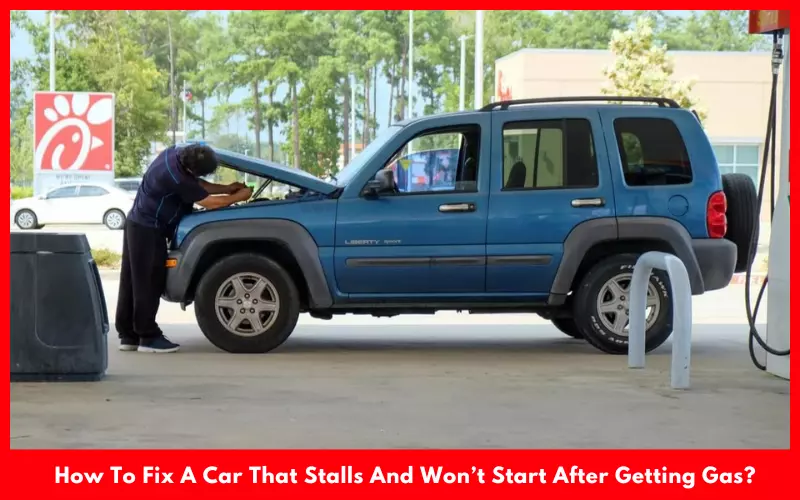
With newer cars, you can do this by pushing the keyless start button 3 to 4 times keeping the ignition and key on. But don’t put the foot on the brake and push the start as you normally do to start the engine. Instead, press the start button on the ignition a few times without pushing the brake.
This will build pressure in lines and after cycling, put the foot on the brake and push the start button. The car should start. With older cars, follow the same techniques except pumping the accelerator a couple of times. With a newer vehicle, you don’t need to push the accelerator as it includes fuel injection.
If your car doesn’t have a push button, turn the key before starting the car and turn back the key to the off position.
Check offroadlounge to explore jeeps.
FAQs
Why Does My Car Stall After Getting Gas When Accelerating?
If your vehicle stalls while accelerating, it can be the result of a vacuum leak, a bad fuel pump, or a clogged fuel filter. The other reasons can be a dead alternator, malfunctioning ECU, faulty EVAP purge control valve, or bad fuel gauge.
Why Car Sputters When Starting After Getting Gas?
Car sputters when accelerating after getting gas due to a bad purge valve. You may also need to replace the fuel filter as a damaged one can cause a loss of significant fuel pressure. Clean the fuel filter and check the fuel pump as it can also help.
Why Does My Car Battery Die After Getting Gas?
A defective or worn-out battery can die after getting gas as it needs to give the necessary voltage to start the car. Stalls can occur if the battery can’t give the essential voltage. In this case, you have to change the drained battery to prevent damaging the engine.
Final Words
If your car stalls after gas, tow the car to the expert mechanic to determine the exact issue and fix it properly. However, you can easily avoid this frustrating experience simply by refilling the tank before its level drops down under half. Put high-quality fuel and regularly check the car’s condition so you can drive safely and efficiently without any disturbance.

